

How is the industry positioned to meet the demands for EVs and green technology? Is there adequate mining and recycling? Can the average person afford the costs?
Medieval Forvie, Scotland. The heyday of Forvie village was during the 12th and 13th century at a period of warmer, drier weather in Scotland, making life here quite pleasant. Sadly this prosperous village was overwhelmed by natural forces - the gradual movement of sand northwards making the soil poor and infertile. After the great sandstorm of 1413 the village was doomed and the end came when the village was finally abandoned in 1680.
Water Vapour Is The Main Greenhouse Gas, Not CO2
Wikipedia: Water vapor accounts for the largest percentage of the greenhouse effect, between 36% and 66% for clear sky conditions and between 66% and 85% when including clouds
NOAA: Water Vapor is the most abundant greenhouse gas in the atmosphere...yet is still fairly poorly measured and understood.
NASA: Water Vapor Confirmed as Major Player in Climate Change.
Based on the information above, water vapour is the number one greenhouse gas yet most climate alarmists omit this from their charts (left). Correctly displaying
all greenhouse gases in the second chart shows how much less humans have an influence on these overall gases.
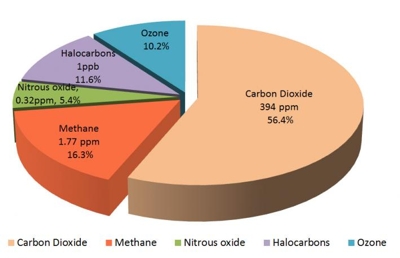
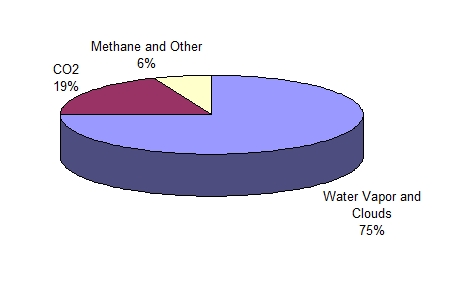
Let's examine CO2 more closely. Pre-industrial CO2 (naturally occurring) was 280 ppm. Current levels are 400 ppm. The human made level is 120 ppm. The left graph below shows this.
During this same time period human population increased from around 1 billion to over 7 billion people. Even without industry, humans would
still add CO2 to the atmosphere because 1) we all exhale CO2, 2) increased deforestation for cities and farms, 3) billions of more cows and other livestock for our food
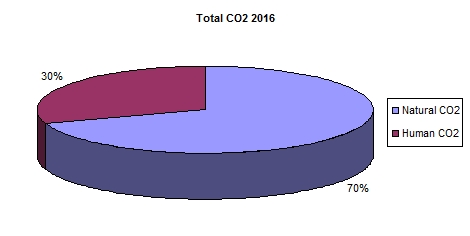
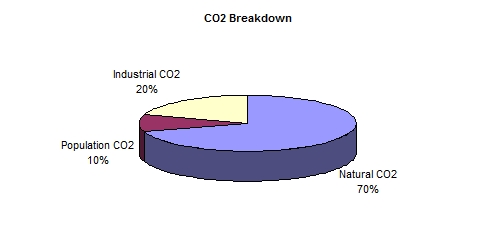
Adding the break-down of CO2 back into the overall greenhouse gas chart, we get the following below. Notice that industrial CO2 only accounts for about 4% of all
greenhouse gases. This 4% is the only thing that humans can change unless we also reduce our population (which is unlikely).
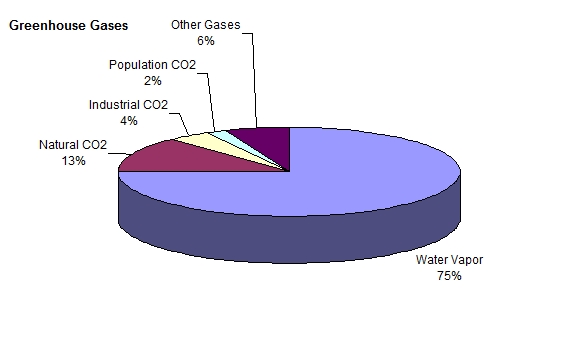
United Nations Food and Agriculture Organization: Livestock a major threat to environment. This report states that
livestock produces more CO2 (and methane) than transportation! If livestock populations can do this than so can human population growth.

A 2012 study done by NASA stated Satellites See Unprecedented Greenland Ice Sheet Surface Melt. "Measurements from three satellites showed that on July 8, about 40 percent of the ice sheet had undergone thawing at or near the surface. In just a few days, the melting had dramatically accelerated and an estimated 97 percent of the ice sheet surface had thawed by July 12". This would be excellent proof for alarmists to state that AGW is real. However, looking at ice core samples, the same scientists found that, "Ice cores from Summit show that melting events of this type occur about once every 150 years on average. With the last one happening in 1889, this event is right on time".
A 2016 study published in sciencemage.org found that melting of the basins of the southeast and northwest "...have undergone profound change and have contributed more than 70% of the total ice loss to the ocean". The scientists also found that "The onset of increasing flow of the northeast Greenland ice stream (the largest flow feature of the ice sheet), for example, has been linked to a geothermal hot spot".
"A recent study by Kjeldsen et al. (19) shows that the same three basins contributed 77% of GrIS`s total mass loss over the last century (between 1900 and 1981)". Another scientific study that shows that parts of Greenland have been melting since 1900, long before any significant CO2 increases.
Despite these melting events, Greenland ice has actually grown in many parts. On July 15 1942 a P-38 fighter of 94th Fighter Squadron/1st FG along with other aircraft made an emergency landing on an ice field and abandoned and eventually buried under 268 feet of snow and ice. In 1992 the plane was excavated. Despite 50 years of increasing CO2 and many alarmists claims that Greenland ice will melt, the ice actually increased by 268 feet in this location.